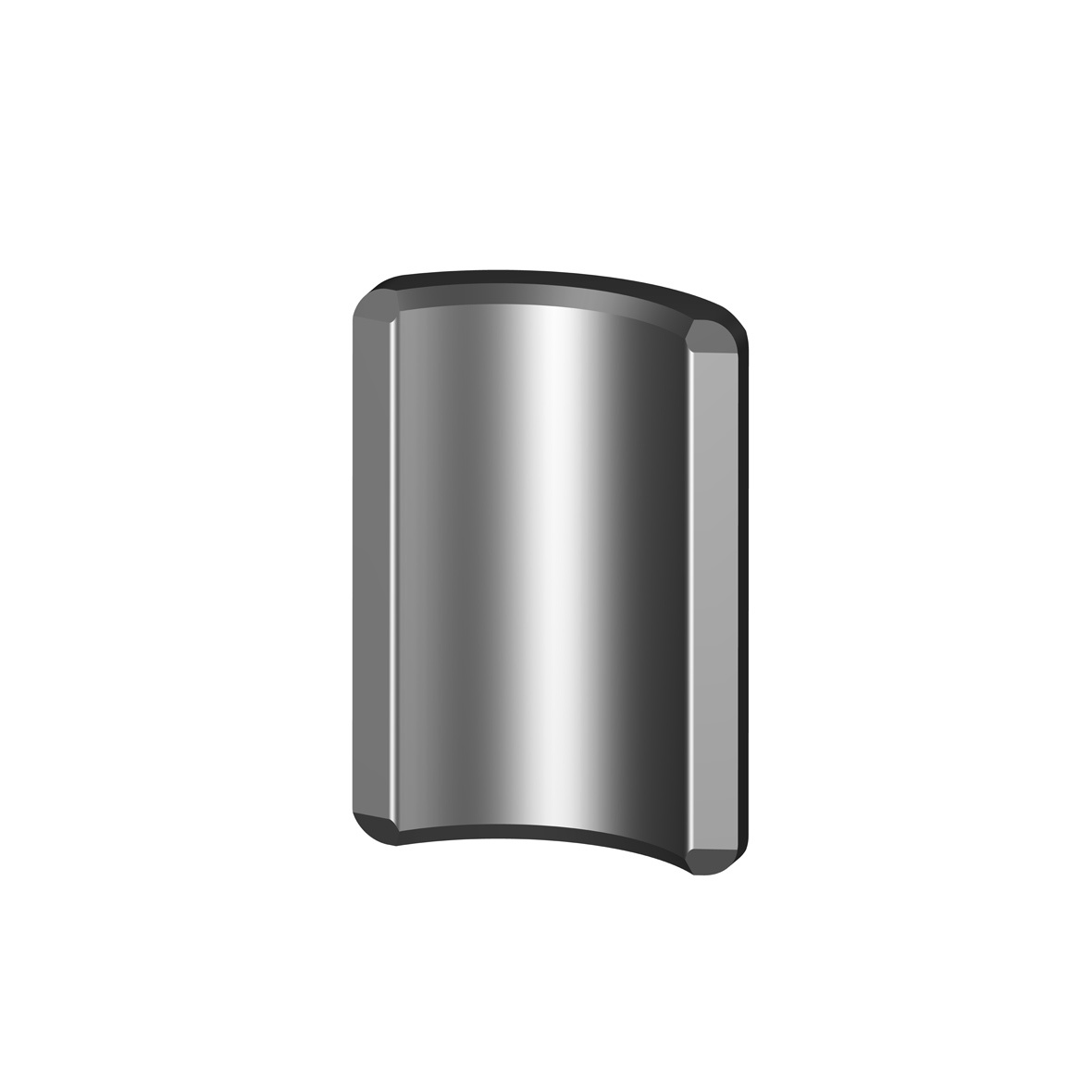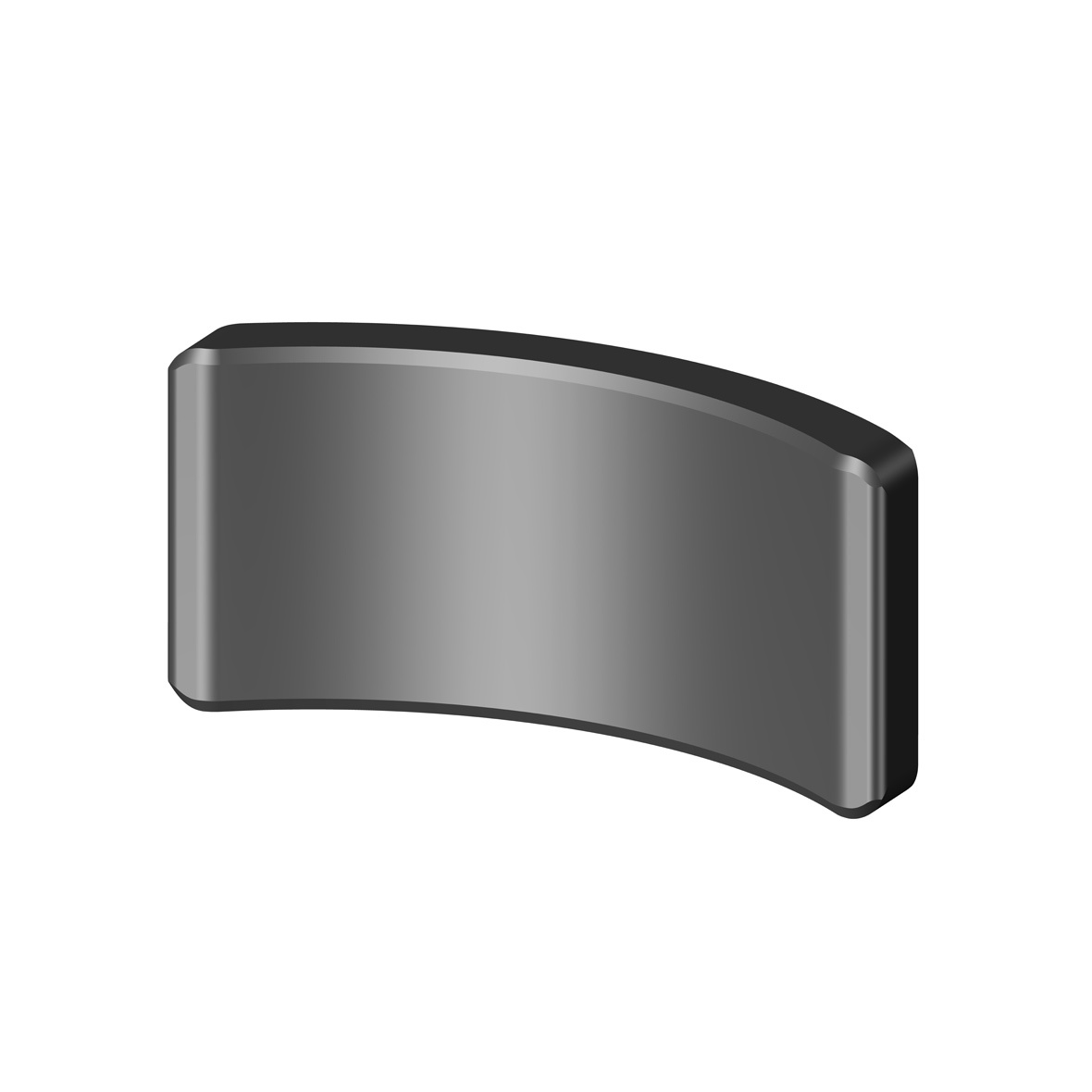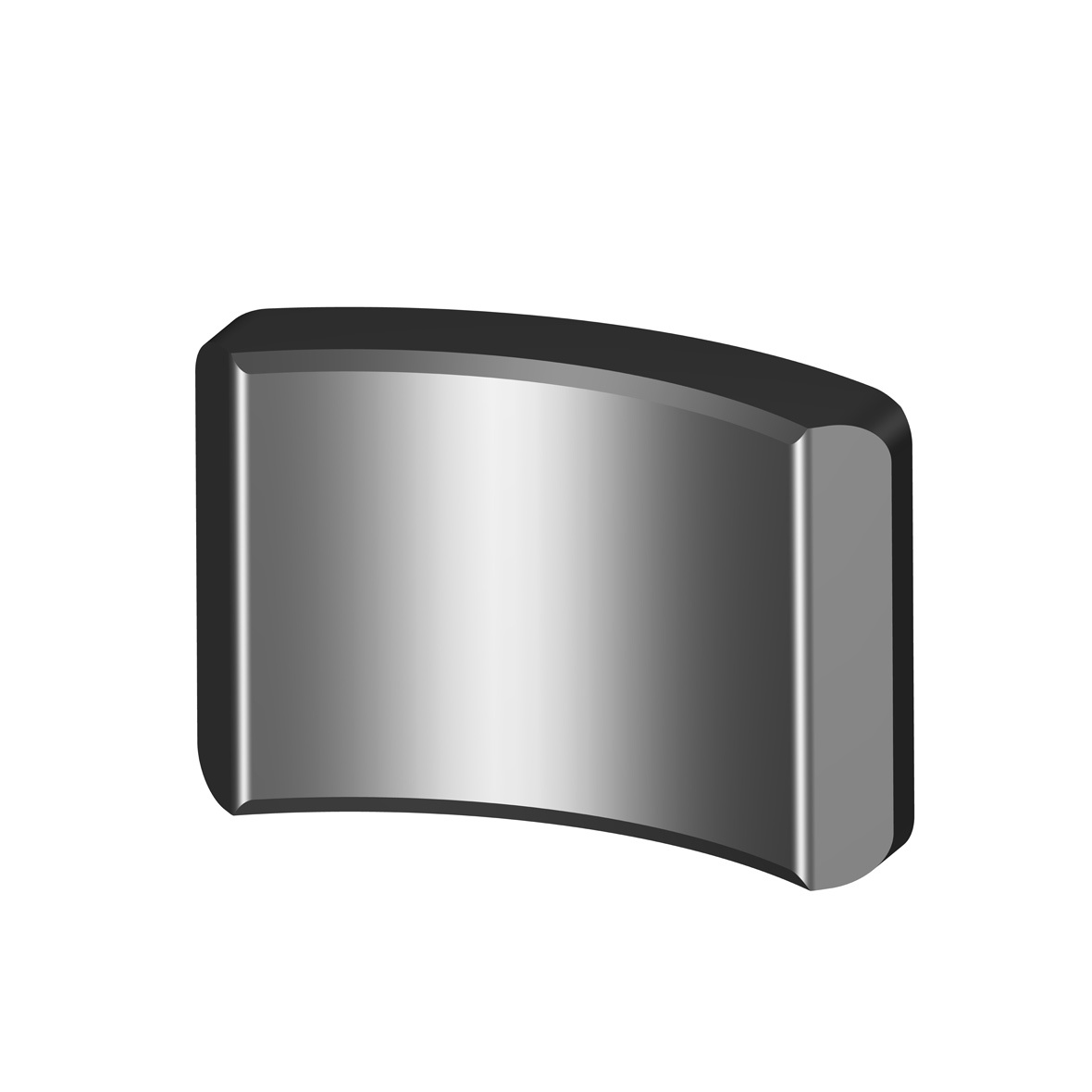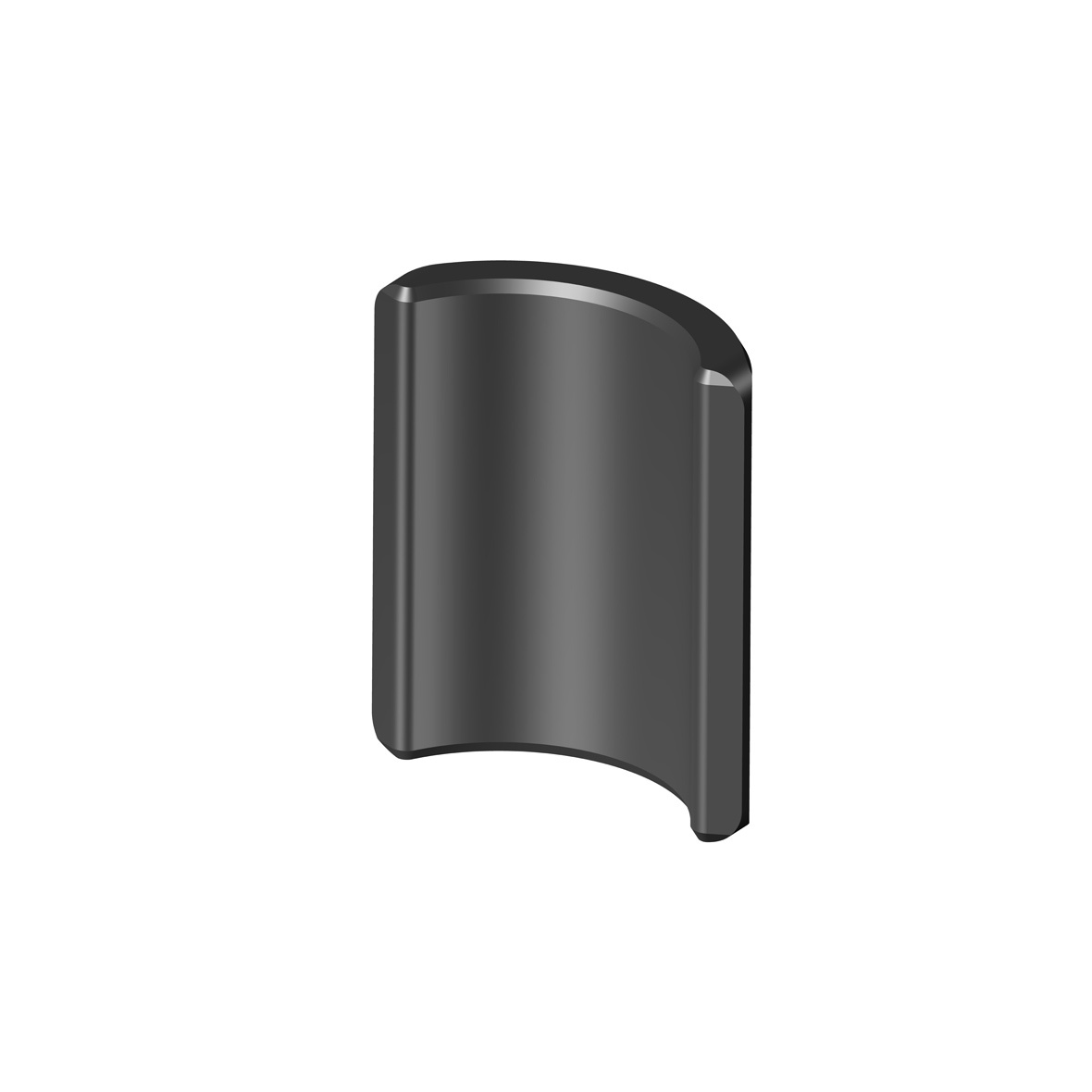


Magnetic lining plates for mining ball mills
The wear of conventional ball mill liners typically occurs due to the direct contact between the slurry, grinding media, and the liner itself—primarily from abrasion between steel balls and the liner, as well as electrochemical corrosion. However, the alternately arranged magnetic liners behave differently. Installed on the inner walls of the ball mill, these liners create a curved magnetic system with a strong, consistent magnetic field across their surface. During operation, fragmented steel balls and magnetic minerals are attracted to the liner surface, forming a durable wear-resistant layer that protects the liner. For newly installed magnetic liners, users can manually add crushed steel balls, broken steel forgings, or iron concentrate powder to build up this protective layer, which ideally reaches a thickness of 20 to 30 millimeters. Because this protective layer adheres firmly to the magnetic liner surface, it effectively prevents the slurry and other media from coming into direct contact with the liner. As a result, mechanical wear and electrochemical corrosion caused by the slurry—and other media—are significantly reduced, greatly extending the liner's service life. This is why magnetic liners have earned the nickname "never-wearing liners" both domestically and internationally. That said, since the ball mill operates continuously, subtle sliding friction and minor electrochemical corrosion still occur over time. Consequently, while magnetic liners do experience some degree of wear, it remains minimal compared to conventional liners. As the magnetic liner wears deeper and approaches the surface of the magnetic poles, the enhanced magnetic field strength at that area further intensifies the attraction force, causing the protective layer to thicken automatically and bolstering its ability to shield the liner. This self-reinforcing mechanism explains why magnetic liners initially wear relatively quickly—but once the metal protective shell begins to form, the rate of wear slows down dramatically. As a result, magnetic liners often outlast high-manganese steel liners by several times, even up to tenfold in certain cases.
- Commodity name: Magnetic lining plates for mining ball mills
- Product Description
-
The principle of magnetic liners
The wear of conventional ball mill liners typically occurs due to the direct contact between the slurry, grinding media, and the liner—primarily from abrasion between steel balls and the liner, as well as electrochemical corrosion. However, the alternately arranged magnetic liners behave differently. Installed on the inner wall of the ball mill, these liners create a curved magnetic system with a strong, uniform magnetic field across their surface. During operation, crushed steel balls and magnetic minerals are attracted to the liner surface, forming a durable wear-resistant layer that protects the liner itself. For newly installed magnetic liners, an additional step can be taken by manually adding crushed steel balls, broken steel forgings, or iron concentrate powder, helping to establish an effective protective layer measuring 20 to 30 millimeters thick. Because this protective layer adheres firmly to the magnetic liner surface, it effectively prevents the slurry and other media from directly contacting the liner, significantly reducing both mechanical abrasion and electrochemical corrosion. As a result, the service life of the magnetic liner is greatly extended—so much so that it has earned the nickname "never-wearing liner" both domestically and internationally. Still, since the ball mill operates continuously, subtle sliding friction and minor electrochemical corrosion inevitably occur over time. Consequently, while the magnetic liner does experience some slight wear, the degree of wear actually slows down as the liner becomes more deeply embedded in the magnetic field near the pole surfaces. This increased magnetic attraction causes the protective layer to thicken further, enhancing its ability to shield the liner against wear. Thus, although the magnetic liner initially wears relatively quickly, its rate of wear gradually decelerates as the metal protective shell diminishes. Ultimately, the service life of a magnetic liner often surpasses that of high-manganese steel liners by several times—or even up to tenfold in some cases.
The material of magnetic liners
● Material of the metal protective case
The material for the metal protective casing is a special non-magnetic steel developed independently by our company's researchers. It features exceptional properties such as wear resistance, acid resistance, alkali resistance, corrosion resistance, strong magnetic permeability, and complete transparency to magnetic fields—meaning it poses no obstruction to magnetic forces. These characteristics ensure that the resulting protective layer possesses both sufficient strength and adequate thickness, thereby guaranteeing a long service life.
● The material of magnetic materials
The magnetic washing materials used are carefully selected. Based on years of practical experience, our company employs magnetic materials that offer stable performance and reliable quality—ensuring the superior quality of our products. Additionally, we incorporate robust materials like neodymium iron boron in certain vulnerable areas to enhance durability.
● Waterproof adhesive
A foreign-imported waterproof adhesive is used, which boasts strong bonding power, ensuring the magnetic blocks are firmly attached to the protective layer. Additionally, it offers excellent water resistance, forming a durable barrier when applied to the surface of the magnetic blocks. This waterproof adhesive layer must maintain sufficient strength throughout transportation, installation, and use, remaining intact even under challenging conditions.
Performance of Magnetic Lining Plates
1. The service life of magnetic liners typically ranges from 4 to 6 years in the second and third stages of iron ore processing, and from 2 to 4 years in the second and third stages of non-ferrous metal mining.
2. This product is lightweight, weighing 40-50% less than manganese steel liners. As a result, it helps reduce the power consumption of ball mills by 7-10% compared to manganese steel liners.
3. This product can reduce ball consumption in ball mills by approximately 10% compared to manganese steel liners.
4. This product ensures that the ball mill prevents mineral leakage, avoids grinding of bearing shells, and eliminates magnetic agglomeration.
5. This product is easy to install and can typically be completed within one day, reducing the physical workload for workers.
6. Environmental Conditions for Product Use
(1) Medium temperature: 0°C to 100°C.
(2) Use steel balls with a diameter of Ф60mm or smaller.
7. This product enables the ball mill to achieve finer grinding particle sizes compared to high-manganese steel, while also increasing mill throughput—and boosting mill operating efficiency by more than 1%.
8. Our company has a long history of manufacturing magnetic materials, known for their stable and reliable performance. In 1996, our company's technical staff participated in the magnetic circuit design work for China's first ball mill magnetic lining plate.
Keywords:
Product Message
Note: Please leave your email address, our experts will contact you as soon as possible!
Related Products





